
Eilandje: Antwerp's Maritime Gem
Eilandje in Antwerp: Discover the Perfect Blend of Maritime Heritage, Culinary Delights, and Vibrant Culture in Belgium's Oldest Port Area.
Eilandje, translating to 'Little Island,' is Antwerp's oldest port area and a hidden treasure for tourists. This vibrant neighbourhood blends historic charm with modern allure, offering a unique experience for every visitor. The cobbled streets and renovated warehouses provide a picturesque backdrop for leisurely strolls, while the waterfront views are simply breathtaking. Home to the iconic MAS (Museum aan de Stroom), Eilandje is a cultural hotspot. The museum is a must-visit, showcasing Antwerp's rich maritime history and offering panoramic views of the city from its rooftop. The Red Star Line Museum is another gem, recounting the poignant stories of emigrants who sailed from Antwerp to the New World. Gastronomes will delight in the diverse culinary scene, ranging from cozy cafes to gourmet dining establishments. The neighbourhood's waterfront restaurants are perfect for enjoying fresh seafood while watching the boats glide by. For those seeking nightlife, Eilandje's trendy bars and clubs promise an unforgettable evening. Eilandje is also a hub for events and festivals, particularly during the summer months. Whether it's a jazz festival, open-air cinema, or food market, there's always something happening. The neighbourhood's vibrant atmosphere and friendly locals make it a welcoming destination for tourists of all ages.
Local tips in Eilandje
- Visit the MAS museum early in the morning to avoid crowds and enjoy the rooftop views in peace.
- Wear comfortable shoes as the cobblestone streets can be uneven.
- Check the local event calendar before your visit to catch any special festivals or markets.
- Try the seafood at one of the waterfront restaurants for a true taste of local cuisine.
- Consider renting a bike to explore the neighbourhood and surrounding areas more easily.
Eilandje: Antwerp's Maritime Gem
Eilandje, translating to 'Little Island,' is Antwerp's oldest port area and a hidden treasure for tourists. This vibrant neighbourhood blends historic charm with modern allure, offering a unique experience for every visitor. The cobbled streets and renovated warehouses provide a picturesque backdrop for leisurely strolls, while the waterfront views are simply breathtaking. Home to the iconic MAS (Museum aan de Stroom), Eilandje is a cultural hotspot. The museum is a must-visit, showcasing Antwerp's rich maritime history and offering panoramic views of the city from its rooftop. The Red Star Line Museum is another gem, recounting the poignant stories of emigrants who sailed from Antwerp to the New World. Gastronomes will delight in the diverse culinary scene, ranging from cozy cafes to gourmet dining establishments. The neighbourhood's waterfront restaurants are perfect for enjoying fresh seafood while watching the boats glide by. For those seeking nightlife, Eilandje's trendy bars and clubs promise an unforgettable evening. Eilandje is also a hub for events and festivals, particularly during the summer months. Whether it's a jazz festival, open-air cinema, or food market, there's always something happening. The neighbourhood's vibrant atmosphere and friendly locals make it a welcoming destination for tourists of all ages.
Iconic landmarks you can’t miss
MAS - Museum aan de Stroom
Discover Antwerp's maritime history and vibrant culture at MAS - Museum aan de Stroom, a stunning architectural gem in the heart of the city.

Het Steen
Discover Het Steen, Antwerp's historic castle that beautifully showcases the city's rich maritime heritage and architectural splendor.

Zaha Hadidplein
Discover the architectural prowess of Zaha Hadid at Zaha Hadidplein, a captivating tourist attraction in Antwerp that merges art, design, and culture.

The oldest house of Antwerp
Explore The Oldest House of Antwerp, a historical treasure showcasing Flemish Renaissance architecture and the city’s rich cultural heritage.

Monument for Killed Belgian sailors
Discover the Monument for Killed Belgian Sailors in Antwerp, a poignant tribute to maritime bravery, offering reflection and stunning riverside views.

A for Antwerp Sign
Discover the charm of Antwerp at the iconic A for Antwerp Sign, a vibrant landmark perfect for photos and immersing in local culture.

De Antwerpse Fluisteraar
Discover the serene beauty of De Antwerpse Fluisteraar, a captivating sculpture in Antwerp that harmonizes art with nature.

Flandria boarding point
Experience the heart of Antwerp from its picturesque waterways at Flandria Boarding Point, where stunning views and rich history await every visitor.

Statue de Jan Cornelis Van Rijswijck
Explore Antwerp's rich history at the Statue de Jan Cornelis Van Rijswijck, a breathtaking tribute to the city's cultural legacy.
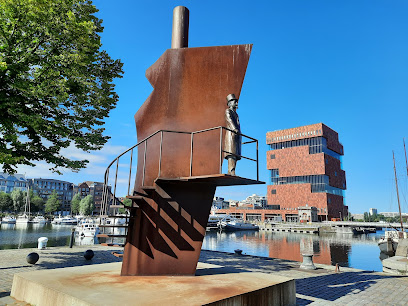
Herdenkings monument Kim en Ken
Discover the tranquil Herdenkings Monument Kim en Ken in Antwerp, a serene memorial park dedicated to love and remembrance amidst stunning greenery.

Unmissable attractions to see
Zaha Hadidplein
Explore Zaha Hadidplein, a stunning architectural plaza in Antwerp, Belgium, blending innovative design with cultural vibrancy.
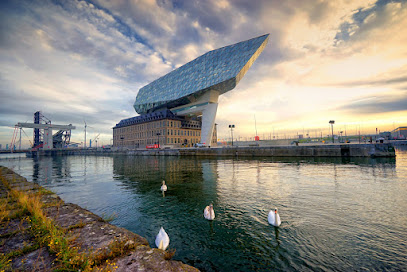
Keizerskapel
Discover the tranquil beauty and historical significance of Keizerskapel, a hidden gem in Antwerp's vibrant cityscape.

Ponton Kattendijkdok
Experience the tranquil beauty of Ponton Kattendijkdok in Antwerp, a perfect retreat by the water with stunning views and a relaxing atmosphere.

Lichtschip 3 - West-Hinder
Discover the maritime heritage of Antwerp at Lichtschip 3 - West-Hinder, a historic floating lighthouse that narrates the tales of sea navigation.

Flandria boarding point
Explore Antwerp's stunning canals and waterfront views from Flandria Boarding Point - your gateway to unforgettable boat tours.

Statue de Jan Cornelis Van Rijswijck
Discover the Statue of Jan Cornelis Van Rijswijck in Antwerp, a captivating tribute to the city's rich history and vibrant culture.
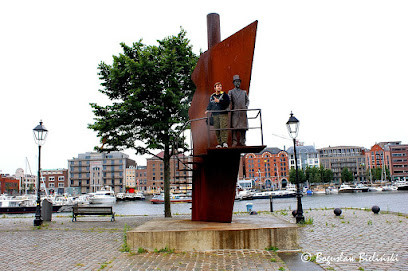
Mały Kazio in Antwerpen
Experience the culinary charm of Mały Kazio in Antwerp, where traditional flavors meet a cozy atmosphere in the heart of the city.

Essential places to dine
Roest
Discover the vibrant flavors of Antwerp at Roest - where local ingredients meet modern cuisine in a charming riverside setting.

Napo’s
Savor authentic grilled flavors at Napo’s in Antwerp - where culinary artistry meets a charming ambiance.

Mon Restaurant
Discover Mon Restaurant in Antwerp - where grilling meets Belgian tradition in a vibrant atmosphere.

La Pipe d'Anvers
Discover La Pipe d'Anvers: A charming restaurant-bar in Antwerp offering delightful cuisine and vibrant ambiance.

Zilte
Experience the pinnacle of fine dining at Zilte in Antwerp, where innovative vegetarian cuisine meets artistic culinary excellence.

Marcel
Savor the exquisite blend of Belgian and French cuisine at Restaurant Marcel in Antwerp - where every meal is a celebration of flavors.
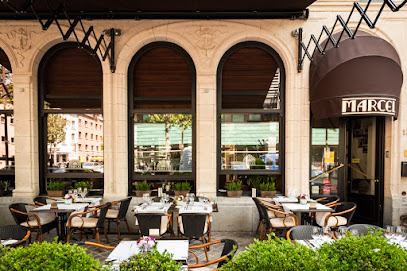
The London
Experience exquisite fusion cuisine at The London in Antwerp - where traditional flavors meet innovative culinary artistry.

L'Isola Di Giò
Discover authentic Italian flavors at L'Isola Di Giò in Antwerp - where every meal is a delightful journey through Italy's rich culinary heritage.
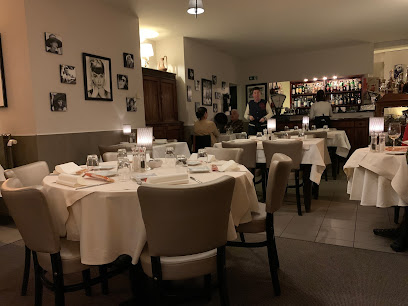
Au Vieux Port
Experience exquisite Belgian cuisine at Au Vieux Port in Antwerp - where every dish tells a story of flavor and tradition.

Nome
Experience the perfect blend of Belgian and French cuisine at Nome in Antwerp - where every dish tells a story.

Markets, malls and hidden boutiques
Jelly Jazz @ Grand Bazar
Explore Jelly Jazz @ Grand Bazar in Antwerp for unique gifts, local crafts, and detailed travel maps that capture the essence of your journey.

Juttu
Explore Juttu in Antwerp for unique gifts and stylish clothing, reflecting the vibrant culture and fashion of Belgium.

Urban Outfitters
Explore the eclectic offerings of Urban Outfitters in Antwerp, where fashion meets creativity in a vibrant shopping experience.

The Other Shop
Explore The Other Shop in Antwerp, a cozy bookstore offering a diverse collection of literature and a welcoming space for book lovers.

MOOSE in the CITY
Discover Nordic-inspired fashion, decor, and toys at MOOSE in the CITY, the charming shopping destination in Antwerp that offers unique and stylish finds.
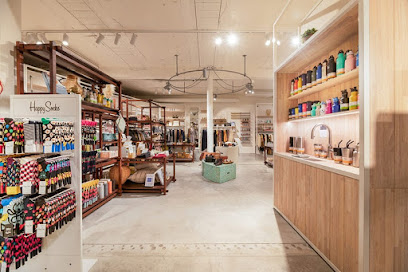
Veritas - Antwerpen
Explore Veritas in Antwerp for unique fashion accessories, craft supplies, and children's clothing, a creative haven for every enthusiast.
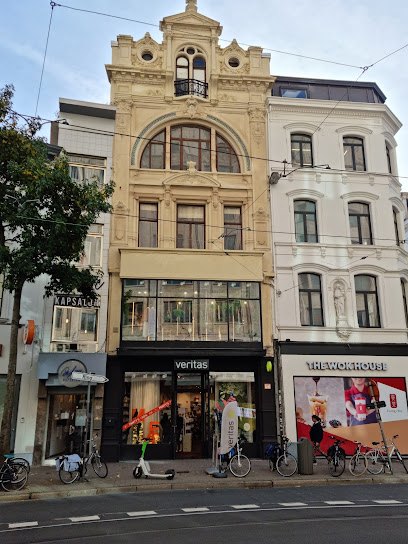
Akotee
Explore the charm of Akotee, a unique gift shop in Antwerp offering locally crafted treasures and unforgettable souvenirs.

State of Art Store Antwerpen
Discover the perfect blend of modern and classic men's fashion at State of Art Store in Antwerp, where style meets quality in every stitch.

MAS shop
Explore a unique selection of local souvenirs at MAS Shop in Antwerp, capturing the city's rich culture and artistry.

Antwerps Kantwinkeltje
Explore Antwerps Kantwinkeltje, Antwerp's enchanting gift shop for exquisite lace and local crafts, embodying the spirit of Belgian artistry.

Essential bars & hidden hideouts
Bar Paniek
Discover Bar Paniek in Antwerp: a vibrant bar with stunning waterfront views, eclectic decor, and a lively atmosphere perfect for socializing and relaxation.

La Pipe d'Anvers
Discover the unique flavors of Antwerp at La Pipe d'Anvers, where a cozy bar meets a delightful restaurant experience.

Den Tros café
Experience the warm atmosphere and vibrant nightlife at Den Tros Café, a charming bar in the heart of Antwerp with an extensive drink menu.

bar Tikila
Discover the vibrant atmosphere and expertly crafted cocktails of Bar Tikila, a must-visit cocktail bar in the heart of Antwerp.

BelRoy’s MAS
Discover BelRoy’s MAS, Antwerp's premier cocktail bar, blending vibrant atmosphere with expertly crafted cocktails for an unforgettable nightlife experience.

Bar Brut
Discover the vibrant atmosphere and craft beverages of Antwerp's Bar Brut, where locals and tourists come together to enjoy the best of Belgian pub culture.

Paloma
Discover the charm of Paloma, Antwerp's premier pub and wine bar, renowned for its exquisite natural wines and inviting atmosphere.
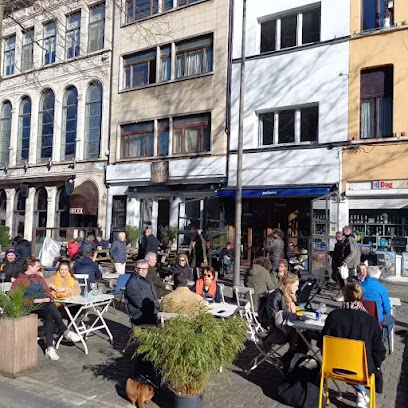
Pink Velvet
Experience the vibrant atmosphere and delightful drinks at Antwerp's unique pub, Pink Velvet, where every visit is a memorable adventure.

Sin Seven
Discover the vibrant nightlife of Antwerp at Sin Seven, a trendy bar with a cozy atmosphere and an impressive drink selection.

Café Sur l'eau
Discover the charm of Café Sur l'eau in Antwerp - a peaceful pub by the water, perfect for relaxation and enjoying local drinks.
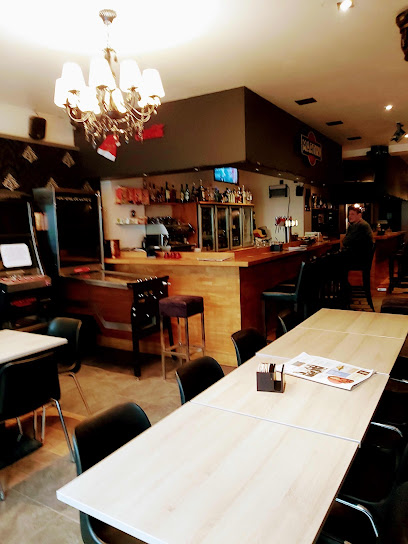
Local Phrases
-
- HelloHallo
[ha-loh] - GoodbyeTot ziens
[tot zeens] - YesJa
[ya] - NoNee
[nee] - Please/You're welcomeAlstublieft
[al-stu-bleeft] - Thank youDank u
[dank oo] - Excuse me/SorrySorry
[so-ree] - How are you?Hoe gaat het met u?
[ho-uh gat het met oo] - Fine. And you?Goed. En met u?
[khoot. en met oo] - Do you speak English?Spreekt u Engels?
[sprekt oo engels] - I don't understandIk begrijp het niet
[ik buh-grayp het neet]
- HelloHallo
-
- I'd like to see the menu, pleaseMag ik de menukaart zien, alstublieft
[mag ik de me-nu-kart seen, al-stu-bleeft] - I don't eat meatIk eet geen vlees
[ik eet khayn vlays] - Cheers!Proost!
[prohst] - I would like to pay, pleaseIk wil graag betalen, alstublieft
[ik vil khraakh buh-ta-len, al-stu-bleeft]
- I'd like to see the menu, pleaseMag ik de menukaart zien, alstublieft
-
- Help!Help!
[help] - Go away!Ga weg!
[ga vekh] - Call the Police!Bel de politie!
[bel de po-lee-see] - Call a doctor!Bel een dokter!
[bel ayn dok-ter] - I'm lostIk ben verdwaald
[ik ben fer-dwahlt] - I'm illIk ben ziek
[ik ben zeek]
- Help!Help!
-
- I'd like to buy...Ik zou graag kopen...
[ik zow khraakh koh-pen] - I'm just lookingIk kijk alleen maar
[ik kayk al-leen maar] - How much is it?Hoeveel kost het?
[hoo-val kost het] - That's too expensiveDat is te duur
[dat is tuh dyoor] - Can you lower the price?Kunt u de prijs verlagen?
[kunt oo de prees fuh-rah-ghen]
- I'd like to buy...Ik zou graag kopen...
-
- What time is it?Hoe laat is het?
[hoo laht is het] - It's one o'clockHet is een uur
[het is ayn oor] - Half past (10)Half tien
[half teen] - MorningOchtend
[ohkhtend] - AfternoonMiddag
[mid-dahkh] - EveningAvond
[ah-vohnt] - YesterdayGisteren
[khis-ter-en] - TodayVandaag
[fan-dahkh] - TomorrowMorgen
[mor-khen] - 1Een
[ayn] - 2Twee
[tvay] - 3Drie
[dree] - 4Vier
[veer] - 5Vijf
[vayf] - 6Zes
[zehs] - 7Zeven
[zay-ven] - 8Acht
[ahkht] - 9Negen
[nay-khen] - 10Tien
[teen]
- What time is it?Hoe laat is het?
-
- Where's a/the...?Waar is de...?
[var is de] - What's the address?Wat is het adres?
[vat is het ah-dres] - Can you show me (on the map)?Kunt u mij laten zien (op de kaart)?
[kunt oo may lah-ten zeen (op de kart)] - When's the next (bus)?Wanneer is de volgende (bus)?
[ven-ner is de vol-hen-de (bus)] - A ticket (to ....)Een ticket (naar ....)
[ayn ticket (nar)]
- Where's a/the...?Waar is de...?
History of Eilandje
-
Eilandje, meaning 'little island', emerged in the 16th century as a significant harbor area linked to the city's port activities. The neighborhood developed on land reclaimed from the River Scheldt, which facilitated Antwerp's growth as a trading hub during the Renaissance. It played a crucial role in the shipping and trade routes that connected Europe with the rest of the world.
-
During the 16th century, Antwerp's economy flourished, largely due to its strategic port. Eilandje became a bustling center for maritime commerce, with warehouses and shipyards dotting the landscape. This period saw the establishment of the East India Company, which further boosted trade, bringing exotic goods and cultural influences into the neighborhood.
-
The 19th century marked a turning point for Eilandje with the onset of industrialization. The docks expanded, and new industries emerged, transforming the area into a hub of economic activity. This industrial boom attracted a surge of workers and immigrants, leading to a diverse community that contributed to the cultural fabric of Antwerp.
-
By the mid-20th century, the port of Antwerp began to modernize and relocate operations, leading to a decline in Eilandje's commercial prominence. The area experienced urban decay, with many warehouses falling into disrepair. This decline reflected broader trends in the region as the maritime industry shifted towards larger, more efficient facilities.
-
In the early 21st century, Eilandje underwent significant regeneration, transforming it into a vibrant cultural and residential neighborhood. The opening of the Museum aan de Stroom (MAS) in 2011 marked a pivotal moment, showcasing the history of Antwerp and its connection to global trade. Today, Eilandje is characterized by a blend of historic architecture and modern developments, reflecting its rich heritage and dynamic future.
Eilandje Essentials
-
Eilandje is easily accessible from other neighborhoods in Antwerp. From the Antwerp Central Station, you can take tram line 7 or 8 towards the city center and get off at the 'Meir' stop. From there, it's a short walk to Eilandje. Alternatively, bus lines 13 and 21 also connect to Eilandje from various neighborhoods. If you prefer cycling, the city has an extensive bike rental scheme, making it a pleasant ride to Eilandje.
-
Eilandje is compact and best explored on foot or by bicycle. Public transport options include trams and buses, with several stops located conveniently throughout the area. Bicycle rentals are available, and there are dedicated bike lanes. For those who prefer taxis, ride-sharing services are also operational in Antwerp.
-
Eilandje is generally a safe neighborhood for tourists. However, like in any urban area, it's important to remain vigilant. Avoid poorly lit areas at night and keep your belongings secure, especially in crowded places. Petty crimes such as pickpocketing can occur in tourist-heavy areas, so stay alert and be cautious near the waterfront.
-
In case of an emergency, dial 112 for immediate assistance. Local police stations and hospitals are available in Antwerp. It is advisable to have travel insurance that covers emergencies. For minor health issues, you can find pharmacies around Eilandje that offer over-the-counter medications.
-
Fashion: Do dress comfortably for walking and exploring, but avoid overly casual attire when dining at upscale restaurants. Religion: Do respect local customs, especially near religious sites. Public Transport: Do keep your ticket handy and validate it before boarding. Don't eat or drink on public transport. Greetings: Do greet with a friendly 'hallo' and a smile. Eating & Drinking: Do try local specialties like Belgian waffles and beers. Don't waste food; it's considered disrespectful.
-
To experience Eilandje like a local, visit the MAS (Museum aan de Stroom) for cultural insights and stunning views from the rooftop. Explore the waterfront area, where you can find lively bars and restaurants. Attend local events and markets, especially during the summer months. Engage with locals, as they are often eager to share their favorite spots and hidden gems in the neighborhood.
Nearby Cities to Eilandje
-
Things To Do in Mechelen
-
Things To Do in Aalst
-
Things To Do in Brussels
-
Things To Do in Leuven
-
Things To Do in Ghent
-
Things To Do in Louvain-la-Neuve
-
Things To Do in Hasselt
-
Things To Do in Eindhoven
-
Things To Do in Rotterdam
-
Things To Do in Knokke-Heist
-
Things To Do in Genk
-
Things To Do in Bruges
-
Things To Do in Zeebrugge
-
Things To Do in Delft
-
Things To Do in Blankenberge











